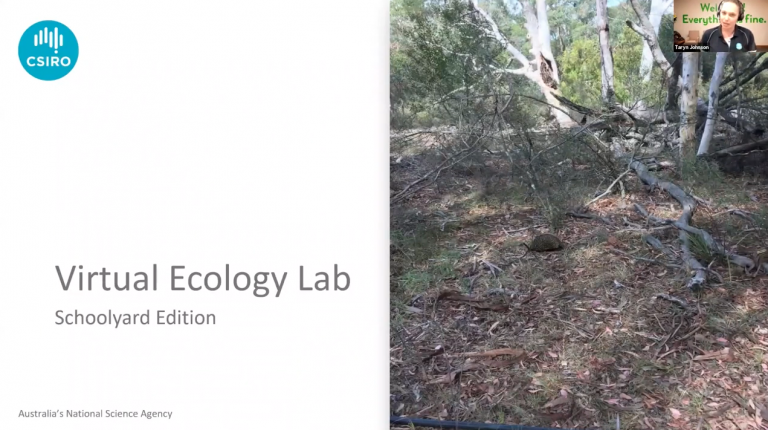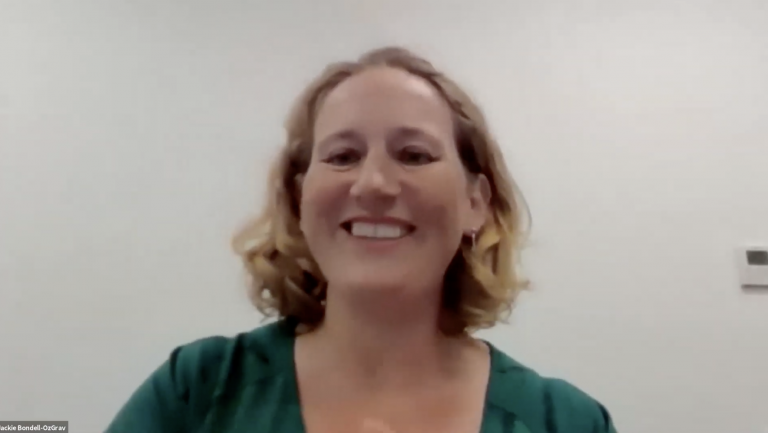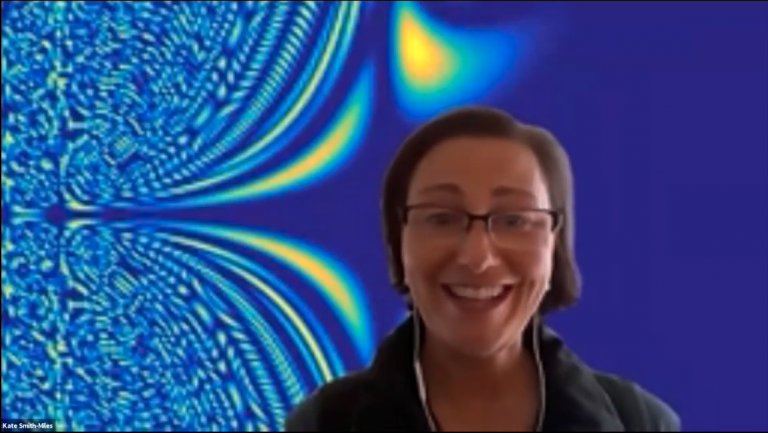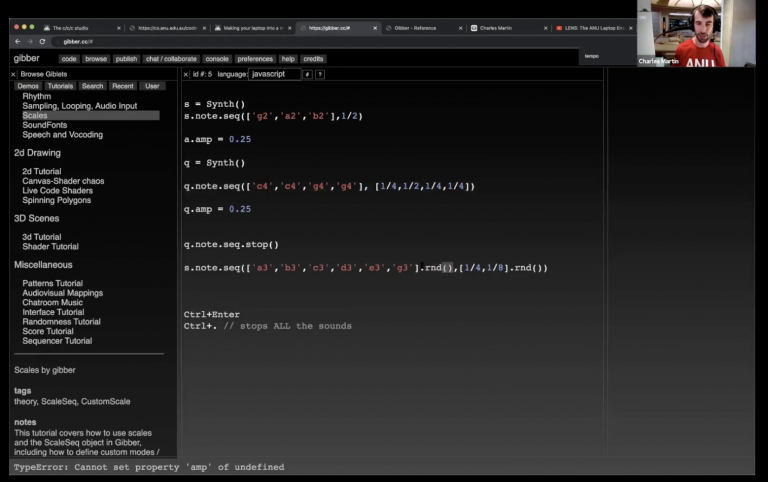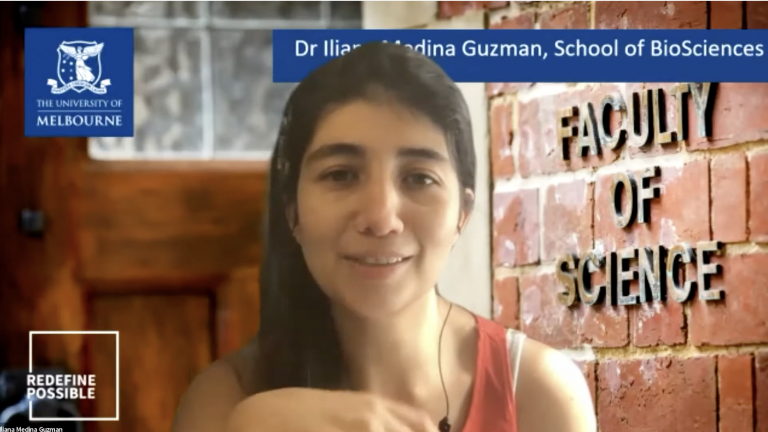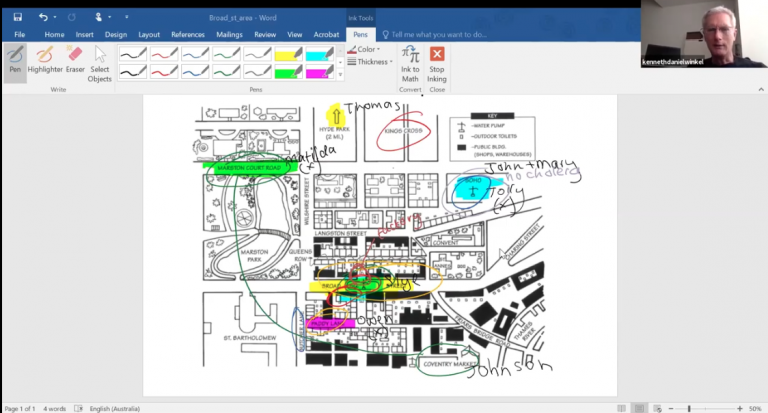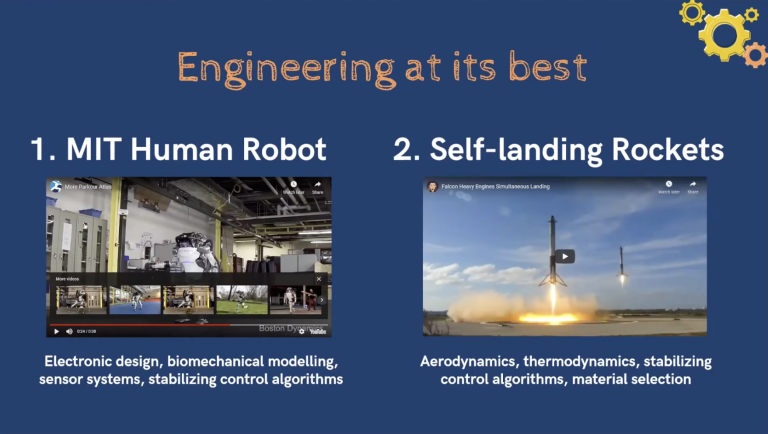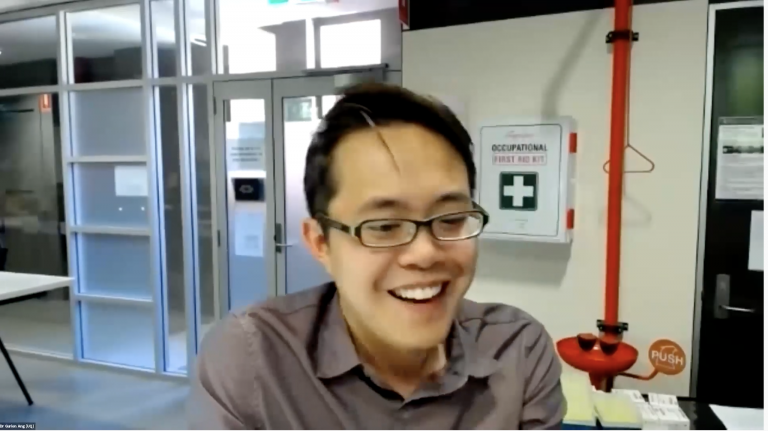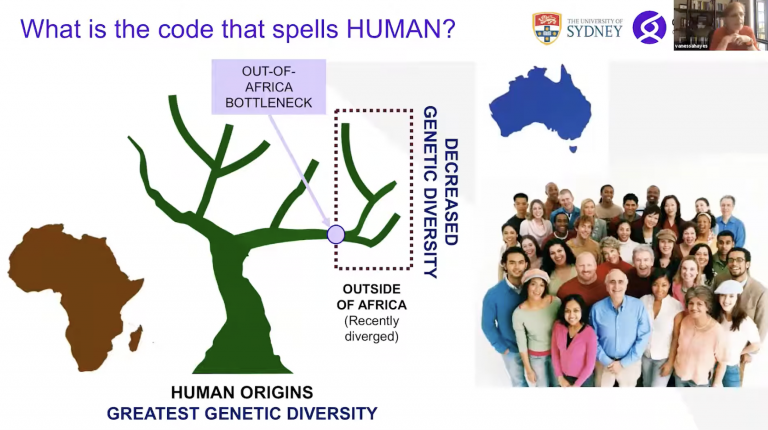Participants had an exciting selection of STEM visits for the final day.
CSIRO guided participants through a virtual ecology workshop, where they learned how to scientifically investigate and analyse their backyard ecology.
Moving from right in our backyards out into space, other participants learnt about discoveries in understanding the universe.
They used their smartphones to design a gravitational wave with Jackie Bondell from the ARC Centre of Excellence for Gravitational Wave Discovery.
Participants learnt about the interdisciplinary applications of STEM through visits with Dr Charles Martin from the Australian National University and Professor Kate Smith-Miles from the University of Melbourne.
Dr Martin showed participants they can be creative with computing by using code to create artwork and music.
Professor Smith-Miles shared how she combined mathematics and art to create beautiful pieces of art. She encouraged participants to explore their artistic passion in their life and STEM.
“I chose the When Mathematics Becomes Art session on a whim but it was probably one of the coolest sessions I’ve attended so far!”
The University of Melbourne hosted a suite of workshops on day three, covering a range of disciplines from engineering to the structure of bird’s nests.
The Engineering Design Workshop empowered the participants to make an impact with engineering to solve societal issues.
A topical session, participants worked together to design technologies to stop the spread of COVID-19.
“The engineering session made me consider more pathways in university, gave me confidence in the ideas I have and opened my mind to mechanical engineering.”
Continuing the theme, Dr Kenneth Winkel then presented his Disease Outbreak in Victorian London workshop. In the workshop, participants had to connect the dots that linked a cholera outbreak in Victorian London.
Given a map, victim cards, and clue cards, groups worked together to trace the common thread between victims and locations.
They then provided their theory on what spread the disease, providing students with a real-life insight into working as an epidemiologist professional.
In the final workshop from the University of Melbourne, Dr Iliana Medina Guzman showed participants why the humble bird’s egg and nest are two of nature’s most incredible structures.
In her Nature’s Design workshop, participants discovered why they are so variable across species and were amazed at the science behind these structures.
Dr Gurion Ang from the University of Queensland walked participants through a teaching lab at the university and gave a mini lecture on gene transcription and regulation.
Dr Ang then demonstrated university-level DNA amplification and analysis.
His workshop gave participants a glimpse into their future if they pursue biological studies at university.
Professor Vanessa M. Hayes from The University of Sydney got participants excited about the world of genomics in her workshop, The Homeland of Modern Humans.
She fascinated students with information about the human genome and its hidden messages from our ancestors.
“Professor Hayes – The Homeland of Modern Humans was an incredible and interesting talk which increased my options and gave me a direction to go in at uni.”

